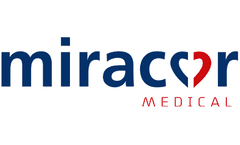Microvessels Articles & Analysis
11 articles found
Skeletal muscle microvascular endothelial cells (SMECs) play an essential role in maintaining muscle function, metabolism, and overall health. These specialized cells line the blood vessels within skeletal muscles, forming a barrier that regulates the exchange of substances between the bloodstream and muscle tissue. Their significance extends beyond mere structural support; they actively ...
Inflammation is a series of complex response events produced by the host system to pathogen infection and various tissue injuries. When the inflammatory response continues, it enters the stage of "uncontrollable inflammation", which plays an important role in the occurrence and development of complex diseases such as tumors. Therefore, the key molecular events in the process of ...
Heart failure affects about 6.2 million Americans and is rising in prevalence. With half of these cases presenting as heart failure with preserved ejection fraction (HFpEF), it’s essential for both the medical community and the population at large to have a better understanding of its pathology. [1,2] Knowing the differences between HFpEF and its counterpart, heart failure with reduced ...
Introduction Neurologic complications are frequently reported in COVID-19, but our understanding of their pathophysiologic causes and neuroanatomical correlates is limited. While several structural brain imaging findings have been reported in COVID-19, including non-spherical signal abnormalities on Susceptibility-Weighted Imaging (SWI), conventional perfusion imaging has not provided consistent ...
The heart is a unique organ in many respects since its activity is mandatory to sustain life. The heart’s circulatory system and coronary flow regulation are highly adapted to the vital role of the heart in sustaining life and to everyday physiological challenges. Understanding coronary physiology is key for treating patients with ischemic heart disease in general, and ...
As a technology, photoplethysmography (PPG) has been explored for almost a century, but it is only in the last few years that it has had a broader application beyond specialised medical settings. That has generally been driven by the evolution of smartphones, smartwatches and even smaller wearable devices such as smart rings. PPG is most commonly used in pulse oximetry in clinical settings ...
BySky Labs
By combining different cell populations in a fibrin bioink, researchers from Trinity College Dublin, Royal College of Surgeons in Ireland and University of Illinois Chicago were able to sprout an in vitro microvessel network that was then exploited to prevascularise a 3D printed scaffold implanted in a critical size femoral defect using REGENHU bioprinter. ...
ByRegenhu
Highlights Deterministic barcoding in tissue enables NGS-based spatial multi-omics mapping DBiT-seq identified spatial patterning of major tissue types in mouse embryos Revealed retinal pigmented epithelium and microvascular endothelium at cellular level Direct integration with scRNA-seq data allows for rapid cell type identification Summary We present ...
Neoplasia is the abnormal growth and proliferation of abnormal cells or abnormal amounts of cells due to a benign or malignant process. There can be benign tumors, or neoplasms, and malignant ones. Remember that it's the malignant tumors, or cancer, that can metastasize, which is when cancer spreads around the body. Leukemia is used for lymphoid neoplasms presenting with widespread involvement ...
We show how microfluidics technology can be used to fabricate simple and innovative biomimetic tools to shed new light on physiopathological events occurring in the blood microcirculation. Examples of applications are given in the context of the acute respiratory distress syndrome (ARDS), an inflammatory disease of the lung triggered by a massive arrest of white blood cells in the lung ...
Plaques regions containing these immature vessels tend to exhibit increased inflammation and haemorrhage due to the structural deficiencies of the microvessels. Potential therapeutic agents could be designed to target and prevent activation of VV at specific susceptible sites of the adventitia in order to slow down or prevent development of unstable plaques. Secondary therapies ...










